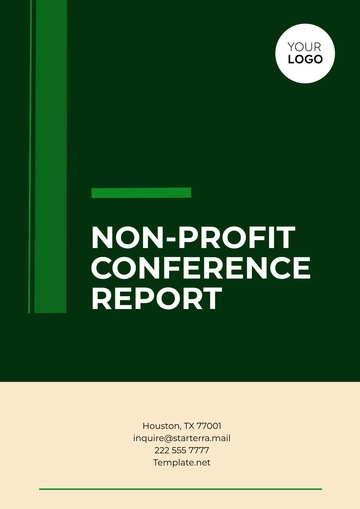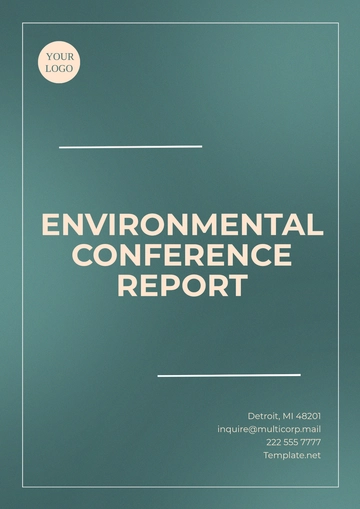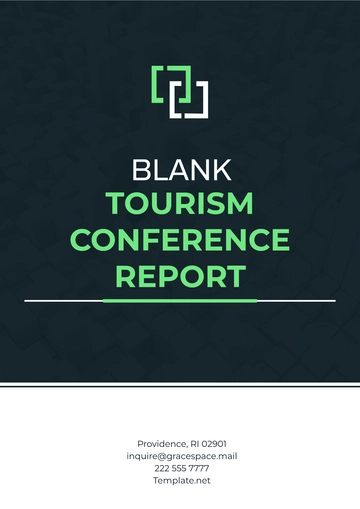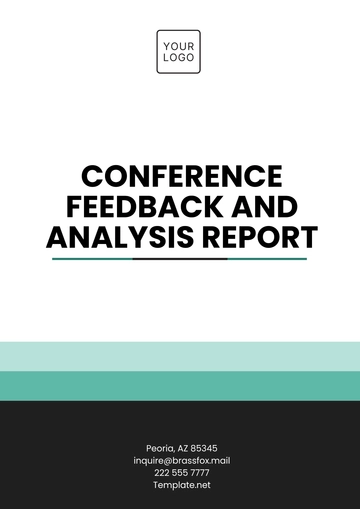Free Aesthetic Church Conference Report

Prepared by:
[Your Name]
[Your Company Name]
Date: November 2054
Location: Grandview Conference Center, Springfield
Introduction
The Aesthetic Church Conference gathered leaders, artists, and community members from diverse church congregations to explore the intersection of art, culture, and worship in contemporary religious spaces. The event provided an opportunity for participants to reflect on the role of aesthetics in enhancing spiritual experiences, while also delving into creative expressions that foster a deeper connection to faith. The conference spanned several sessions, each focused on different aspects of the church’s visual, auditory, and architectural elements in worship.
The event aimed to bridge the gap between traditional religious practices and modern artistic expressions, encouraging attendees to consider how beauty and art can inspire faith and cultivate a more profound worship experience.
Key Themes
1. The Role of Art in Worship
A central theme of the conference was the role of art in worship. The discussions explored how different forms of art—whether visual, musical, or architectural—can deepen the worship experience and invite congregants into a space of spiritual reflection. Speakers emphasized that art in the church should be more than decoration; it should serve as a conduit for reflection, meditation, and connection to the divine.
2. Integrating Aesthetics with Theology
Theological considerations surrounding the use of aesthetics in the church were thoroughly examined. Several keynotes and workshops addressed how the beauty of the church environment—its imagery, design, and space—can be aligned with the theological messages the church seeks to communicate. This integration fosters a richer worship experience, where the physical environment becomes an embodiment of spiritual truths.
3. Sacred Spaces and Architecture
Sacred architecture was another significant topic of conversation. With the growing trend of modern, minimalist church buildings, the conference addressed how architecture can both honor tradition and accommodate modern needs. Sessions included discussions on lighting, acoustics, and the overall layout of worship spaces to enhance the spiritual atmosphere. The physical structure of a church, it was argued, can be as impactful as the content of the services themselves in creating an environment conducive to worship.
4. The Power of Music and Sound
Music and sound design were emphasized as integral to the aesthetic of church services. The use of soundscapes, music selection, and even silence were explored as tools to guide congregants into a reflective, worshipful space. Workshops offered practical advice on how to curate music that supports the theme of each service while cultivating a contemplative and spiritual ambiance.
5. Visual Arts: Painting, Sculpture, and Digital Media
A growing presence of digital media in churches was also a point of discussion. Presentations showcased innovative uses of multimedia, including projections, interactive displays, and the use of video art in worship. Visual artists shared their experiences working with churches to design pieces that enhance both the worship service and the physical space of the church. The power of visual storytelling was discussed, with an emphasis on how it can create deeper emotional and spiritual connections.
Notable Speakers and Presentations
Throughout the conference, several renowned speakers shared their expertise on the relationship between aesthetics and worship. Notable presentations included:
Dr. Mary Hayes, an art historian, gave an insightful talk on the history of sacred art and its evolving role in the church. She explored the significance of visual art in the Christian tradition and its capacity to communicate divine truths.
Rev. Daniel M. Shaw, a pastor and theologian, led a workshop on "Theology in Design," emphasizing how the physical design of worship spaces can embody theological concepts. He also discussed how church leaders can collaborate with artists to create spaces that reflect the heart of the gospel.
Maria Tiziano, a contemporary artist and designer, showcased her digital installations that are used in various churches across the globe. She demonstrated how multimedia can be used to create an immersive worship experience.
Workshops and Hands-on Learning
In addition to presentations, the conference featured several interactive workshops aimed at providing practical tools for church leaders and artists. These sessions included:
Creative Worship Design: This workshop focused on designing a worship service that engages all the senses. Participants learned how to use color, light, and music to set the tone for worship.
Building Sacred Spaces: Led by architects and interior designers, this session provided a comprehensive guide to designing church spaces that promote spiritual reflection and communal worship.
The Art of Spiritual Art: A hands-on session where attendees explored different artistic methods, including painting, sculpture, and digital media, to create pieces that reflect the themes of faith.
Reflections and Future Directions
As the conference concluded, attendees were invited to reflect on how the aesthetic aspects of church life could be further developed in their congregations. Discussions highlighted the importance of intentionality when integrating art and worship. Church leaders expressed a desire to create spaces that inspire awe and reverence while remaining accessible and inclusive for all members of the congregation.
The conference also sparked ideas for future collaborations between artists, architects, and church communities. Many attendees left with a renewed commitment to exploring new ways of engaging the senses in worship and considering how beauty can serve as a means of experiencing God's presence.
Conclusion
The Aesthetic Church Conference was a meaningful exploration of how art, architecture, and music can work together to enrich the worship experience. It emphasized the importance of beauty in the church and how aesthetics can be a reflection of faith. Through thoughtful presentations, interactive workshops, and a shared vision of creative worship, the conference inspired church leaders and artists to continue pushing the boundaries of how beauty can lead believers into deeper encounters with the divine.
- 100% Customizable, free editor
- Access 1 Million+ Templates, photo’s & graphics
- Download or share as a template
- Click and replace photos, graphics, text, backgrounds
- Resize, crop, AI write & more
- Access advanced editor
The Aesthetic Church Conference Report Template from Template.net is fully editable and customizable to meet your needs. Easily modify content, layout, and design using our AI Editor Tool to create a polished, professional report. Perfect for documenting church conferences, this template ensures a clear and visually appealing presentation of key insights and discussions.
You may also like
- Sales Report
- Daily Report
- Project Report
- Business Report
- Weekly Report
- Incident Report
- Annual Report
- Report Layout
- Report Design
- Progress Report
- Marketing Report
- Company Report
- Monthly Report
- Audit Report
- Status Report
- School Report
- Reports Hr
- Management Report
- Project Status Report
- Handover Report
- Health And Safety Report
- Restaurant Report
- Construction Report
- Research Report
- Evaluation Report
- Investigation Report
- Employee Report
- Advertising Report
- Weekly Status Report
- Project Management Report
- Finance Report
- Service Report
- Technical Report
- Meeting Report
- Quarterly Report
- Inspection Report
- Medical Report
- Test Report
- Summary Report
- Inventory Report
- Valuation Report
- Operations Report
- Payroll Report
- Training Report
- Job Report
- Case Report
- Performance Report
- Board Report
- Internal Audit Report
- Student Report
- Monthly Management Report
- Small Business Report
- Accident Report
- Call Center Report
- Activity Report
- IT and Software Report
- Internship Report
- Visit Report
- Product Report
- Book Report
- Property Report
- Recruitment Report
- University Report
- Event Report
- SEO Report
- Conference Report
- Narrative Report
- Nursing Home Report
- Preschool Report
- Call Report
- Customer Report
- Employee Incident Report
- Accomplishment Report
- Social Media Report
- Work From Home Report
- Security Report
- Damage Report
- Quality Report
- Internal Report
- Nurse Report
- Real Estate Report
- Hotel Report
- Equipment Report
- Credit Report
- Field Report
- Non Profit Report
- Maintenance Report
- News Report
- Survey Report
- Executive Report
- Law Firm Report
- Advertising Agency Report
- Interior Design Report
- Travel Agency Report
- Stock Report
- Salon Report
- Bug Report
- Workplace Report
- Action Report
- Investor Report
- Cleaning Services Report
- Consulting Report
- Freelancer Report
- Site Visit Report
- Trip Report
- Classroom Observation Report
- Vehicle Report
- Final Report
- Software Report





























